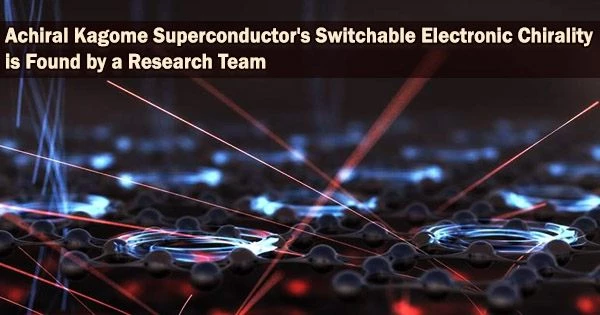The physical behavior of an object depends critically on whether or not it can be distinguished from its mirror image. Consider looking at a basketball player in a mirror. At first appearance, the ball, the player, and their surrounds are identical in the mirror and in real life.
But if observed closely, some details are different. In the mirror, the ball in the player’s right hand is now in their left hand. The hand is still visible in the mirror image, but it is plainly a right hand now rather than a left hand, or vice versa.
Scientists refer to many other physical things as being handed or chiral (from Greek Image = hand) because they contain mirror images that differ in a crucial way from hands. Others, like the ball, are achiral because it is impossible to tell them apart from their mirror counterpart.
One of the most fundamental geometrical characteristics, chirality is particularly important in the fields of physics, chemistry, and biology. It may have unexpected results: For instance, although one version of the carvone molecule smells like spearmint, its chiral mirrored counterpart smells like caraway.
In the field of material science, one can tell whether a crystal’s periodic arrangement of atoms is chiral or not. If it is, then the electrons and electric currents flowing inside of it must also be different in some way from their mirror counterpart, a quality that can result in unusual reactions and unique uses.
One illustration is a diode-like effect known as electronic magneto-chiral anisotropy (eMChA), in which the electric currents running from left to right are different from those going from right to left. This effect has only so far been identified in crystals that are structurally chiral.
The Kagome superconductor CsV3Sb5 is a structurally achiral crystal, and a group of scientists from Germany, Switzerland, and Spain has now reported the first observation of this chiral transport in this crystal.
The quantum puzzle is as simple as it is deep: How is it possible that the crystal’s electrons are not identical to the atomic locations in its mirror image?
Clearly, there must be another mechanism at work in addition to the straightforward form effect we see in our hands. This new electronic chirality can be switched using magnetic fields, in contrast to structural chirality, which is as securely inscribed in a crystal as it is in a human hand.
Switchable chirality has never been seen before and could very likely be used in technology in the future. It is obvious that the intense electrical interactions are the cause of this peculiar behavior.
Although the atoms are placed symmetrically, the team suggests a model in which the electrons arrange themselves in ways that defy mirror symmetry. Many of these interacting electronic structures have already been observed in CsV3Sb5, including the creation of an unusual chiral charge order with an alluring charge modulation.
These chiral electronic structures may rotate spontaneously, causing an orbital magnetic response associated to a behavior known as ‘loop currents’, as described by C. Mielke et al., Nature (2022),
The quantum sandbox CsV3Sb5 seems to be an excellent place to investigate correlated quantum phenomena, including the first instance of switchable electronic chirality. The following steps entail expanding the response’s size and operational range from cryogenic to room temperature. Clearly, interacting systems on geometrically frustrated lattices have much more to offer.





